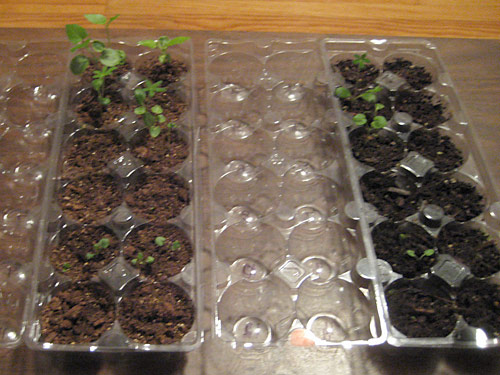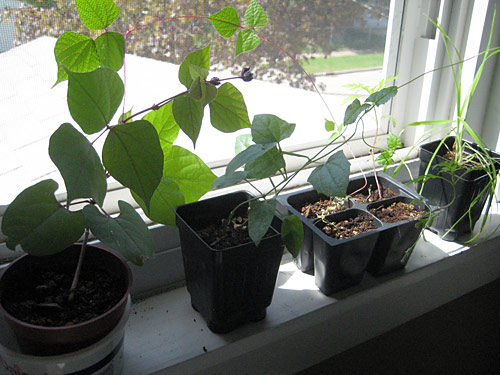What is better than enjoying Happy Hour sipping made-from-scratch margaritas with my friend and fellow gardener Mrs. R? Enjoying Happy Hour, sipping made-from-scratch margaritas with Mrs. R while sorting her vermicompost bin!
Just this past January, the Other Half had lovingly purchased and constructed a vermicompost bin for our home. We moved Jim into his new home, and he has since been happily devouring our garbage. However, we are probably another six months out until we will need to sort the bin. That’s why I was so stinking excited I couldn’t stand it when I drove over to help Mrs. R yesterday.
First the bin was hauled up out of the basement, into the garage, and the contents were dumped onto a tarp. The contents of the bin had the smell of fresh, rich soil.
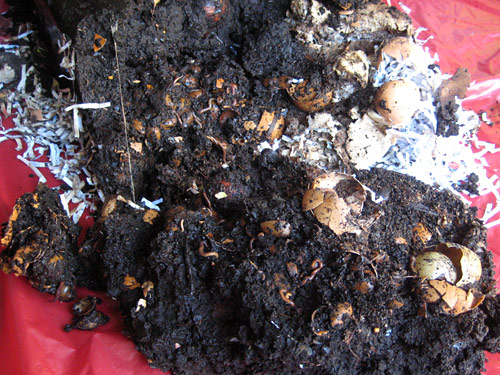
We then both pulled on some gloves and began sorting the contents of the bin. The castings (worm manure) were set aside for use in the garden. The worms along with the majority of the intact compost and remaining bedding were placed back in the bin. It was fun to discover nests of worms in the hollow of an eggshell or an avocado pit. There seemed to be a good variety of worm generations active in the bin.
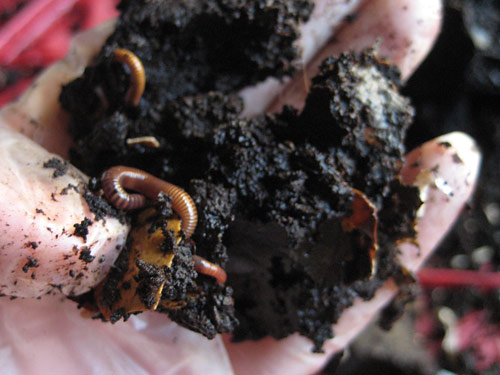
Finally, when all the worms were tucked safely away back in their bin, we hauled the tarp of castings out to the garden beds. Mrs. R chose to use the worm manure to top dress one of their raised beds.
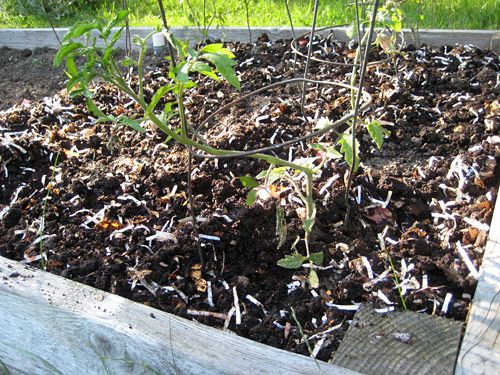
As we were sorting the bin, chatting, and enjoying our cocktails, I kept thinking “This is such an inexpensive and near effortless way to reduce waste and get amazing nutrients for the garden. Plus, its fascinating. Why doesn’t everyone do this!?”
